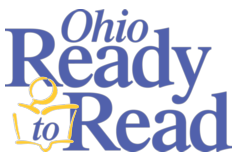Library Collections and Student Learning
The library offers a wealth of resources that can supplement the books offered at school and home. Connect students, parents and caregivers, and teachers with your print, audio, electronic, and nontraditional collections. This section provides ideas for leveraging your nonfiction and electronic resources in particular.
Build and promote your nonfiction collection (but don't neglect fiction!).
The public library typically has the biggest, broadest, deepest collection of fiction and nonfiction books for students in any community. Public librarians have a wide knowledge of books, including access to professional reviews, best-books and awards lists, publishing trends, and new/forthcoming publications. Here are some ways to share these assets with students and teachers:
- Know your nonfiction collection as well as you know your fiction collection.
- Booktalk and do readers advisory with your nonfiction collection.
- Practice matching nonfiction books with readers and recommend specific titles to your regular patrons.
- Be enthusiastic about reading and sharing nonfiction; modeling encourages reading nonfiction for pleasure.
- Include nonfiction on your summer and year-round reading displays and booklists.
- Think about ways to organize your nonfiction to make it discoverable for students at different reading levels.
- Collaborate with Adult Services on how to connect middle school and high school students with the adult nonfiction book collection.
- Welcome teachers to make book purchase recommendations, and prioritize purchasing copies of books students will need to read for school.
Fiction is still important!
Ohio's Learning Standards have shifted toward much more nonfiction in assigned reading, but fiction remains essential.
- Students use nonfiction to gather information and to draw support for opinions, to build knowledge, and to explore the concepts of the main idea and supportive evidence.
- Students use fiction to explore the concepts of theme, cause and effect, character traits, sequence, conflict and resolution, and author's purpose.
- Students use both fiction and nonfiction to learn how to write various text types: argument, informational/explanatory writing, and narrative writing.
- Librarians can help teachers become aware of titles that are appropriate for the standards and also appeal to students. Reading a wide variety of quality fiction will help students to meet writing standards.
Connect students with your electronic resources.
Technology is embedded throughout Ohio's Learning Standards, to help students prepare for college and career in a technological society. Students are expected to explore and use resources in a variety of formats and media. Your technology services provide access for students without home computers and Internet access, and a community access point for all students. The office software, research databases, and other technology tools that students access in your library can also help them develop their skills and become proficient technology users.
Resources:
Outstanding Science Trade Books for Students K–12
A list published annually by the National Science Teaching Association and the Children's Book Council.
Notable Social Studies Trade Books for Young People
An annual project of the National Council for the Social Studies and the Children's Book Council. Both this bibliography and Outstanding Science Trade Books feature K-12 annotated titles published in the previous calendar year.
The Ohio Web Library offers reading and research tools freely to all Ohio residents through Ohio public libraries:
- World Book Early Learning supports Reading Foundational Skills, Reading Literature, and Language standards, and supports Ohio's Early Learning and Development Standards in Language and Literacy.
- World Book Kids, World Book Student, and EBSCOhost's Explora support standards in all areas of English Language Arts. Users can search for informational text articles by topic and Lexile® measure.
INFOhio's Resource Collection is accessible to all Ohio K-12 students and their parents and educators. They may access INFOhio resources anywhere, including at school, at home, or at the public library. Familiarize yourself with the INFOhio website so you can assist students with INFOhio resources in your library.
